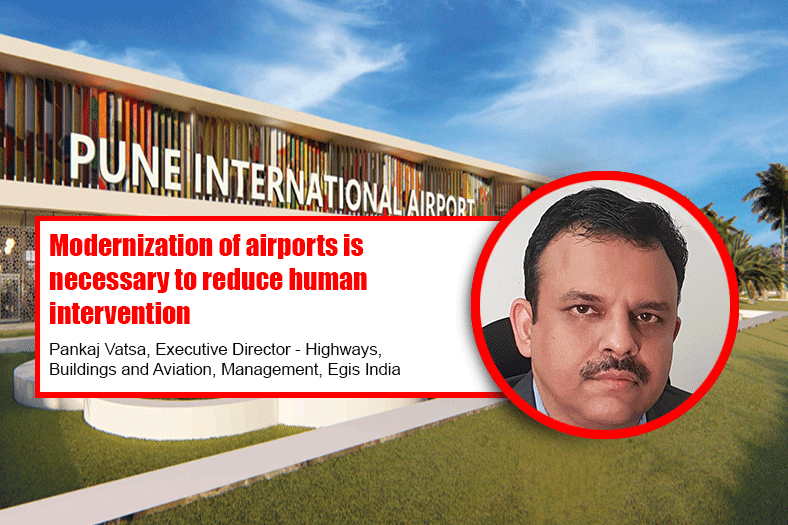Modernization of airports is necessary to reduce human intervention

In today’s world where social distancing is a norm, airports also need to find ways to deploy digitization and automation to make things safe for both passengers and staff says Pankaj Vatsa, Executive Director – Highways, Buildings and Aviation, Management, Egis India.
What are the important elements of airport design?
Broadly there are three main aspects in the airport design i.e. functionality, aesthetics and sustainability. The functionality is where the airport should be located if it’s a greenfield airport and how it can work at its optimum capacity, environment friendly location for safe, efficient and orderly aircraft operation/flow with possibility of future expansion that guarantees best Return on Investment (ROI) for the investments in the immediate future.
Aesthetics is something that takes a back seat normally in most developing countries as it is a cost but in all our projects, we have tried to bring this element very clearly by introducing national and regional flavour to the airports that helps people understand the local culture and traditions and earn the respect of the locals.
Sustainability is the cherry on the cake as it is the only thing that ensures best ROI in the long term and differentiates a good airport from a great airport.
How can airport design be made more sustainable? How has Egis invoked sustainability in the airports it has designed?
Green infrastructure helps in environmentally responsible and resource efficient operations throughout its life cycle. It is important to keep sustainability principles in mind right from airport master planning to construction and operations. Rigorous environmental impact assessment for land selection, rain water harvesting, zero discharge, renewable energy etc. can go a long way in making airports sustainable. Egis is very conscious of its responsibility towards the environment and we have designed airports which meets GRIHA standards. Some of the salient features of our airport projects include use of locally available materials, high performance glazing with low U-value and low heat gain features, low carbon content materials etc.
In the current scenario, what additional protocols are desired to ensure that the airport is safer for passengers?
In today’s world where social distancing is a norm, airports also need to find ways to deploy digitization and automation to make things safe for both passengers and staff. The check-in process needs to be completely online. Automation must be explored and employed at every step wherever possible to reduce human touch. Systems should be used to predict and pre-empt the risks by scanning the people at the airport.
Once normalcy resumes airports may witness an overwhelming number of passengers wanting to travel, under such conditions how can airport facilitation services be optimized?
The airports need to use this lean period to upgrade their systems and processes so that once the traffic returns they are ready to manage and keep the flow smooth. There are many technology solutions available for automization of processes to cut down the passenger movement time from entry gate of PTB to boarding gate e.g. use of advanced biometric system, luggage tracking and quick airport navigation using Internet of Things (IoT) beacons etc.
How do you feel the Covid-19 pandemic will impact the design of future airports?
Post Covid-19, a lot of good to have systems will become a must have. Modernization of airports to reduce human interventions will be one. Digitization of a lot of processes will be another.
Cookie Consent
We use cookies to personalize your experience. By continuing to visit this website you agree to our Terms & Conditions, Privacy Policy and Cookie Policy.









